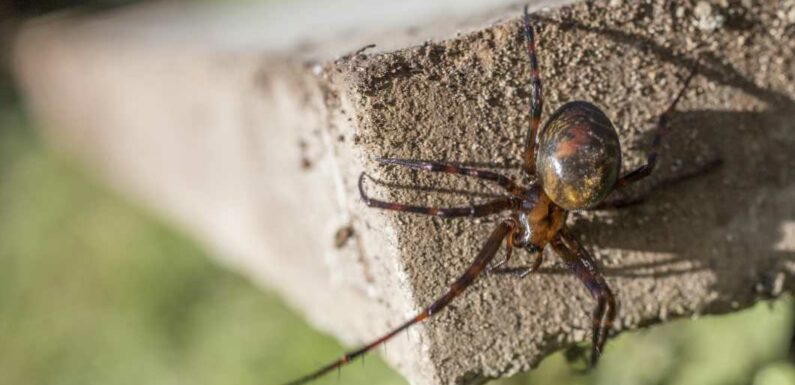
SPIDERS are one of the most common phobias across the UK, especially during winter when the creatures make their way into your home.
But there's one type of spider you need to be particularly aware of – the false widow spider.
It's regarded as one of Britain's most dangerous critters, and it's no surprise why.
False widow spiders come with a venomous bite capable of causing a severe allergic reaction in some people.
But their bites are very unlikely to be fatal and can easily be treated – here's how to deal with the spiders if you spot them in your home.
What is a false widow spider?
Although the arachnid's venom usually has a mild effect on humans, some people have come down with horror injuries after reacting badly to being nipped.
They have been known to infest sheds and houses, leading to fears homeowners may unwittingly be living with them.
The most common type is a noble false widow and is the largest of the three most common species, reaching a body length of between 8.5 and 11 millimetres.
The species is native to the Canary Islands and Madeira, but it gradually spread throughout Europe.
Are false widow spiders dangerous?
Normally, the false widow's bite is similar to a wasp or bee sting, and it’s not usually anything to worry about.
The main symptom indicating a bite is pain at the site lasting between one and 12 hours, rarely lasting for more than 24 hours.
Despite looking similar to their more dangerous cousins, the black widows, they're nowhere near as harmful.
All these spiders are likely to do is give you a small and relatively harmless bite
The females are more likely to bite than the males, and you can expect to experience severe pain and a fever.
There are over 650 species of spider known in the UK but only around 12 are recorded as species that have actually bitten humans.
How do I get rid of false widow spiders?
The British Pest Control Association recommend vacuuming clean the affected area as this will remove the webs and spiders from your house.
But, if this isn't possible, control may be accomplished by the removal of spider's prey.
This may involve the use of insecticidal sprays such as Effect Microtech CS and K-Othrine WG250.
MORE ON SPIDERS
I’m a pest expert – there’s a gross reason not to have your bed against the wall
Jeremy Kyle's daughter rushed to hospital after being bitten by a spider
Everything you need to know about fruit flies and how to get rid of them
How to stop ants from getting into your home
How can I spot a false widow in my home?
All species of false widow: “…have distinctive sets of markings on their abdomens: they have a narrow white or lighter band around the front of the abdomen towards their head, and also other markings that vary by species. However, all of these marks can be variable, faded, or missing, especially in adult females,” according to the Natural History Museum.
“Females have a globular shiny abdomen, while male abdomens are smaller and less rounded, but are more clearly marked.”
How do I prevent an infestation?
You need to look out for the places where false widows tend to build their webs: cracks in walls, inside drainpipes and on any triangular frames inside the house.
As far as your garden is concerned, the critters are most likely to set up camp in sheds or on trellises, so keep an eye on these hotspots.
If you keep getting rid of their homes, the spiders are likely to abandon your house and set up camp somewhere else.
But since you're dealing with venomous critters, it's wise to use a broom when brushing away their webs.
Many spiders tend to spend the winter hibernating – so the summer can often bring a tide of hiding spiders with it.
False widows, named because of their resemblance to the deadly black widow spider, are no different, leading to fears of a summer infestation across the UK.
Source: Read Full Article





